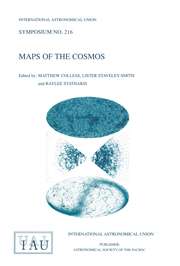No CrossRef data available.
Article contents
Halo/Thick Disk CVS and the Cosmic X-Ray Background
Published online by Cambridge University Press: 25 May 2016
Abstract
Core share and HTML view are not available for this content. However, as you have access to this content, a full PDF is available via the ‘Save PDF’ action button.
In a recent study (Maoz and Grindlay 1995) we have found that a number of previously recognized anomalies in the diffuse x-ray background at soft energies (~0.5-2 keV) can be understood if about 20-30% of the diffuse flux arises from a population of low luminosity sources in a thick disk or flattened halo distribution in the Galaxy. Here we summarize our results and review the arguements that these objects are not accreting neutron stars or black holes but rather white dwarfs (i.e. CVs) which may have been produced in a primordial population of disrupted globular clusters.
Information
- Type
- Part II: Contributed Papers
- Information
- Copyright
- Copyright © Kluwer 1996
References
Boyle, B.J., Griffiths, R.E., Shanks, T., Stewart, G.C., & Georgantopoulos, I.
1993, MNRAS, 260, 49.Google Scholar
Grindlay, J.E.
1994a, in Evolution of X-Ray Binaries, eds. Hott, S. & Day, C., AIP Conf.Proc., 308, 339.Google Scholar
Grindlay, J.E.
1994b, in Millisecond Pulsars: Decade of Surprise, ASP Conf. Proc., Aspen Workshop, eds. Fruchter, A., Tavani, M., Backer, D., in press.Google Scholar
Hasinger, G., Burg, R., Giacconi, R., Hartner, G., Schmidt, M., Trümper, J., & Zamorani, G.
1993, A&A, 275, 1
(H93).Google Scholar
Hertz, P., Bailyn, C.D., Grindlay, J.E., Garcia, M.R., Cohn, H., & Lugger, P.M.
1990, ApJ, 364, 251.Google Scholar

